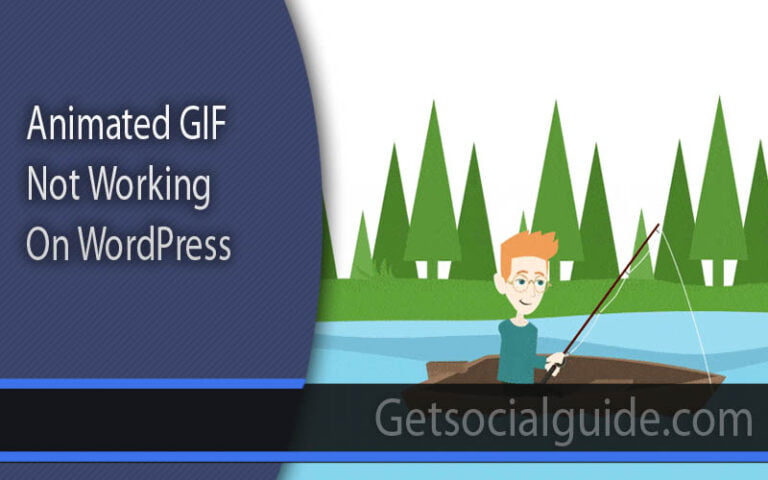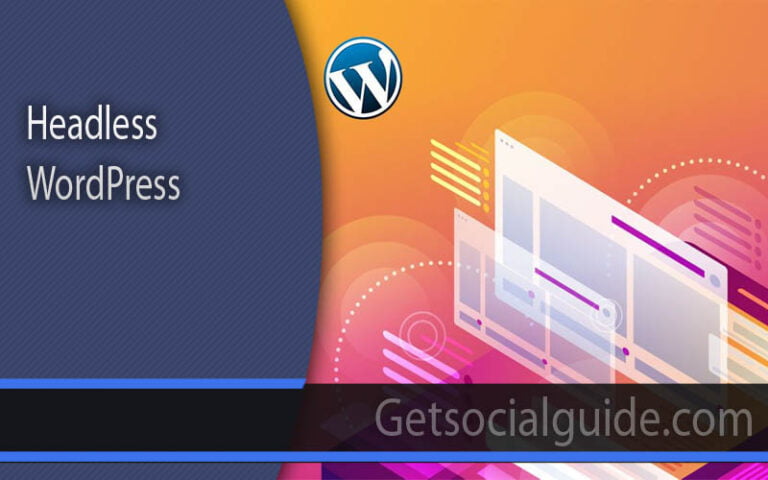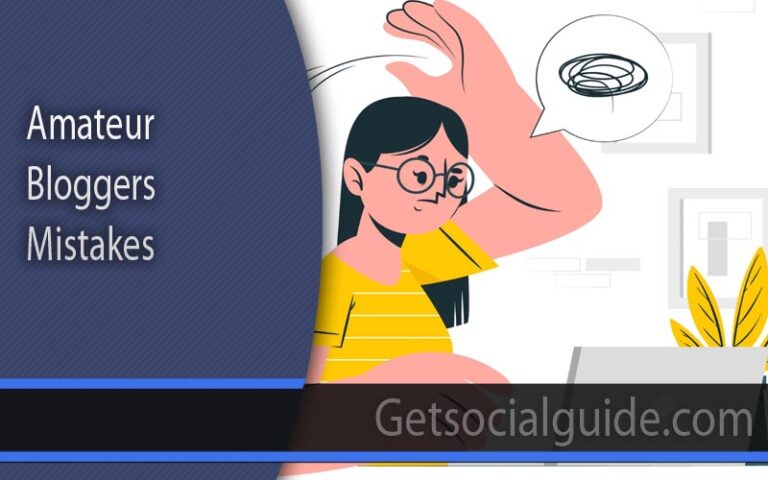Easy Guide To Create Killer About US Page
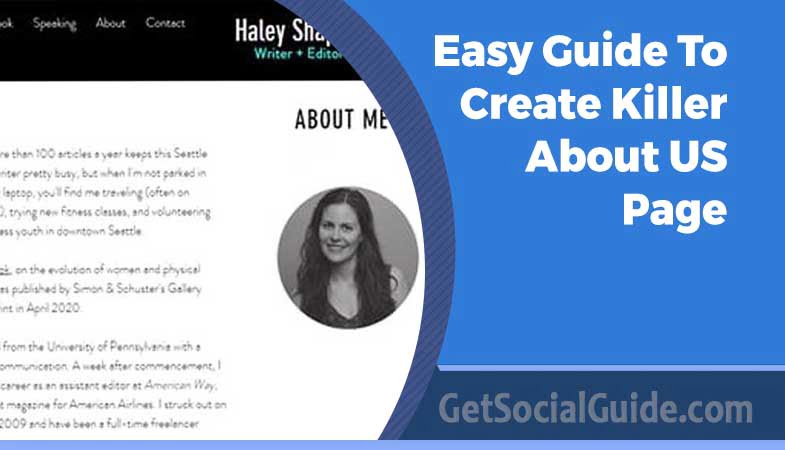
Easy Guide To Create Killer About US Page – Tips & Examples
The Boardwalk square would be the title of your about page if you were to think of the pages on your blog or business website as squares on a Monopoly board. Because this piece of virtual real estate is so valuable, people come rushing through your front door as if it were a never-ending open house, regardless of whether you invited them in or didn’t. They’re very interested! They’re genuinely interested!
There’s more to your about me page than just a picture of yourself and a couple of sentences about your website. A statement such as “I enjoy talking about pink unicorns and fluffy pillows” is insufficient. You can contact me via email at [email protected].” It must persuade you that you are someone who can be trusted and who will become a die-hard, devoted follower.
I understand that it can be difficult to write about yourself. It was a challenge that I had to face as well. But I persevered and, as a result, my About Me page now tells a compelling story and allows new readers to get to know me before deciding whether or not to follow my site.
It is important to remember a few things before you begin writing your About Me Page, especially if you want it to be one that readers will find interesting and informative.
What exactly is an “About Us” page?
An About Us page provides online shoppers with information about your company and the people who work there. This can include the following:
How did you get your company off the ground?
What distinguishes you and your company from the competition
What are the core values and beliefs of your company?
What makes you a good choice for customers
Form, a yoga mat company, has an About Us page that you can check out. Product design, sustainability, and performance are all clearly defined in two short paragraphs, which are the essence of the brand.
So, what have you put on your “About” page to tell people about yourself?
You have approximately three seconds to seduce your Mr. or Mrs. Right (customer) before they abandon ship and seek the instant gratification of another shiny domain. They’re going to instinctively click through to your about page. As soon as they arrive, this is what they should see: clear content, with a hook, that answers questions and contains an element of surprise.
Remarkable Personal Website Examples I Like
Here’s the list of my favorite personal websites. I have recorded the site’s main design elements recorded in .GIF so you can have more details. The websites are ordered according to the time I discover them – they are by no means a “ranking” list.
1. Nick Jones

2. Jim Ramsden

3. Vladimir Strajnic

4. Gary Le Masson

5. Juliana Rotich

6. Pascal van Gemert

7. Daryl Thornhill

8. Anthony Wiktor

9. Adam Hartwig

10. The Beast Is Back

What exactly are they looking for?
Your About Us page, which is likely to be the most frequently visited page on your website, gives visitors a glimpse behind the scenes and an understanding of who you are. In the end, it assists people in determining whether or not they should purchase whatever it is that you are selling.
There is no room for the ordinary, the generic, or the unauthentic in this environment. Yes, you must address the who, what, where, and why of your company and brand, but you must do so in a way that is distinct from the competition. It’s likely that what you’re selling can be found for less money elsewhere. You must provide those potential customers with a compelling reason to choose your company over all others when it comes to making a purchase.
So, what is the best way to go about it? Tell a story about yourself. Everyone enjoys a good story. This is the story that needs to be told about your company. Who you are, where you’ve come from, what you sell, and why you sell it are all important information. Furthermore, it must be personal. Customers are much more likely to connect with your brand if they can see the people who are behind it.
It must, however, be a short story in order to be considered. While it may appear as though there is a lot to cover on an About Us page, it must be concise and easy to read for visitors. Use bullets, subheadings, and images to break up the text. Don’t bore your audience, don’t brag, and don’t waffle. Be yourself — and use this space to demonstrate to your readers why your brand is the best fit for them.
What information should be included on your About Us page
When you work closely with your company, it can be difficult to know what information to include on your About Us page. It all seems so natural to you that you have no idea what people will be interested in learning about and what the most important points are to bring up. We’ve put together a few pointers to assist you along the way, including:
You need to grab the reader’s attention right away with your introduction sentence. People click away in a matter of seconds, so this sentence needs to be a knockout punch of a paragraph. The best advice is to finish it last, after the rest of your content has been completed.
Exactly what you solve and how you solve it: Yes, this is all about the products, services, and expertise you provide, but it needs to go much further than that. What is the problem that you are solving for the reader? The cause of this can be a problem in the market, such as other companies not meeting a need satisfactorily, or it can be much more specific. Seth Godin, a marketing expert, writes about quarter-inch drill bits in his book
This Is Marketing (This Is Marketing). A drill bit is something that no one wants. They are interested in the shelf that the drill bit will assist them in putting up. More than that, they want the end result of their room looking more organized as a result of their belongings being placed on the shelf. Tell those potential customers what the end result will be for them if they choose to do business with you.
Your brand’s story: Customers who are loyal to a brand will continue to buy from that brand. They must first come to like the brand in order to do so, and they cannot do so unless they are aware of the brand’s history.
Consequently, tell them about your beginnings, your growth, your passions, and your motivations for going to work. Include milestones such as the date you hired your first employee, the date you opened your first office, the date you expanded, merged, or franchised, and the date you went public. Take a look at the MOZ website for some ideas and suggestions.
Who you are and what you do: This is your best opportunity to establish a personal connection. In this day and age, faceless corporations are no longer relevant. People are eager to see one another. As a result, while you will need to talk about yourself, make sure to include photographs of you and your teammates. Apptopia does an excellent job of this, not only through headshots of their team members, but also through photos of their team having a good time together outside of the office.
What distinguishes you from the competition: Customers continue to buy into connections. What are your core values, and what are your motivations for starting the company? Do you have a favorite charitable organization? Have you received any honors? All of these details have the potential to influence someone’s decision to convert.
You are in the following location: Curious people want to know where businesses are located, regardless of whether it is an online business or not. If you have a storefront and want to attract customers, this is an absolute must-have.
The final sentence should be rousing and passionate: “Go out with a bang.” In your final sentence, inspire and establish trust, because it is this that results in brand fans.
Hello there, friends! I’d like to speak with you today about something very important: Your blog’s “About Me” page is a good place to start. You can expect your blog’s “About Page” to become one of the most useful and popular pages on your site. What are you talking about?! There, new readers can learn more about you and why they should stick around (as well as what they can expect from you!).
Psst, after you’ve read about how to create a killer about me page, keep reading because I’ll tell you how I turned my blog into a thriving business!
The process of creating an A+ About Me Page entails much more than simply posting a bio about yourself and an iPhone photo of your face on the internet. In order to get the most out of your About Page, there are several steps you should follow. Today, I’ll walk you through each of these steps step-by-step so that you can get the most out of this important page. In addition, writing about oneself is difficult. This is going to make things a whole lot easier. Is it possible to get an amen?!
1. What kind of value do you provide to your readers?
This is a biggie, which is why I’m sharing it with you right away. #seewhatididthere? In your About Me page, you should focus entirely on the value you provide to your readers. People are interested in learning about you (which we will discuss further), but they are also interested in learning how YOU intend to assist THEM. Prior to writing your About Page, determine what it is that makes your blog useful to readers and who your blog is intended for before you begin writing. (Don’t forget to download a free worksheet at the end of this post to assist you in answering this question!)
2. For whom is your website intended?
It says on my About Page that the site was “launched in 2013 as a community for creative entrepreneurs and bloggers, as well as small business rockstars,” and that it is “a rapidly growing collective of go-getters from all over the world.”
That, my dear friends, was done on purpose. Why? Because I want the right people to KNOW what they’re getting into when they visit our About Page. I want them to realize right away that this website was created specifically for THEM. I strongly advise you to specify who your website is intended for in order to establish a quick connection with the reader. To be sure, there will be some people who read this who aren’t “entrepreneurs, bloggers, [or] small business rockstars” and conclude that this site isn’t for them. We cannot guarantee that they will not leave our site and will not return. But don’t worry, my friends; everything will be fine. We want to reach the right people, not #allthepeople, so we’re focusing on that.
Do you want some free worksheets to assist you in organizing all of this? To get your hands on them, simply click on the image below.
Worksheets Included! How to Write a Killer About Me Page for Your Blog (with Free Resources!) | Do you have trouble writing about yourself? Interested in capturing the attention of potential readers and turning them into #superfans? For more information on writing an outstanding about page for your blog or business, see our guide.
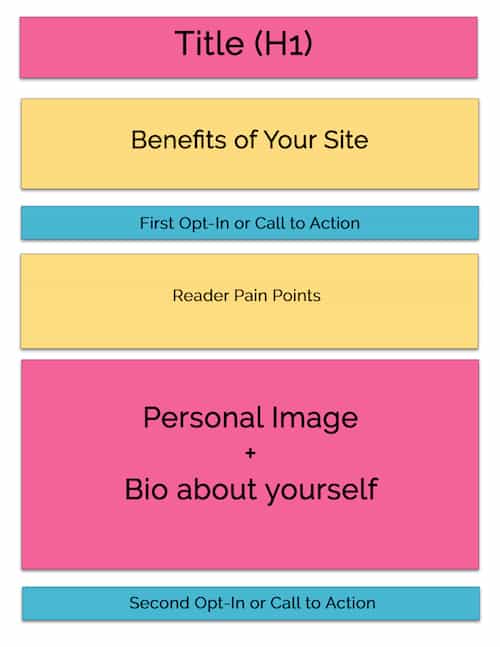
3. The description of your website
It’s great that you’ve crafted some sentences specifically for your intended audience. Now, what should be your next step? Typically when aiming to attract readers, folks tend to start with their own narrative instead of highlighting how their platform will serve or intrigue those potential followers first. Once visitors comprehend the value proposition behind it all though, they’ll more likely convert into patrons (or subscribers/fans/whatever label fits!). So prior to composing a bio about yourself per se, have you pondered over these queries yet?:
Would you find value in reading my blog? If you relish X, Y and Z topics, then this is the perfect place for you.
What is the intended takeaway from your posts? Can followers anticipate gaining fashion inspiration, business insights or joining a community of supportive women? Provide information regarding what they can expect to happen in the foreseeable future.
What types of content are you usually writing? Do you have any remarkable series that people should know about and would like to share with them? Which entry point is the most effective for getting started in your opinion?
How can your blog’s credibility be enhanced? There are multiple ways to achieve this, such as citing well-established online platforms that have featured your content or highlighting extensive expertise in a particular domain. Another approach is being transparent about ongoing learning and relishing the opportunity to share fresh insights with readers.
How did your website come about? Use this section to add a personal touch and share how the idea for your website originated. Was there ever an experience in your life that motivated or inspired you? Maybe, was it when you were younger – say third grade -when first found interest in the topic of your blog? Don’t hesitate to tell us more information about yourself!
4. Your personal biographical information
Okay, peeps, you’ve finally earned the right to talk about yourself in your personal bio! In this section, you should primarily share information about your personal life that is relevant to your blog or business. What this means is that you should not just share 30 random facts about yourself and leave it at that. Your About Page is an interview with yourself. In the same way that you wouldn’t go into a job interview and ramble on about yourself, you shouldn’t approach the creation of your About Page in this manner. As an alternative, talk about how your blog fits into your life — why you started it, for example. When did your feelings for X first blossom?
Now, it is acceptable to include some random, relatable information on this page — in fact, I would encourage you to do so! Including details about your hometown, your hobbies, and anything else that is distinctively “you” can help you connect with your target audience. My only piece of advice? Do not solely rely on this type of information to populate your About Page.
5. The most important thing that most people overlook
Now that you’ve completed the majority of your writing, it’s time to bring it all together into something extremely important that most people forget to include: a call to action.
A call to action (also known as a CTA) is something that encourages your readers to…you guessed it…do something with their time. This could be something as simple as asking them to sign up for your newsletter or to say “hello” to you on Twitter, among other things.
You want the person who reads your About Page to remain on your site for the long haul, which is why your CTA is so vitally important. Someone reading your page, falling in love with it, and then completely forgetting about your website is something you don’t want to happen. Bleh. A subscription of some sort ensures that they will remain up to date with the latest information.
Additionally, it is a good idea to place your CTA in multiple locations throughout your About Page. Despite the fact that we would like people to read the entire thing, the reality is that they will frequently skip around or skim your content. The CTA for my about page is located near the top of the page within the text, and a visual CTA image is located near the bottom of the page as well.
Purchase a domain name and web hosting service.
On the Internet, your domain name serves as your online identity. It’s how people find you, and it’s the name that others spread about you. You’ll need a good domain name for your personal website in order to get started. The majority of people choose their own names as the domain name for their personal website; others may choose something memorable or meaningful to represent them. If you need assistance, here are some suggestions and free domain name generators to get you started.
Following that, you’ll require a reputable web hosting company to host your personal website.
Generally speaking, when we talk about web hosts, we are referring to the company that leases out computer servers and networks to allow you to host your own website. There are four different types of web hosting services: shared, virtual private server (VPS), dedicated server, and cloud hosting. While all of these hosting services will act as a storage center for your website, they differ in terms of storage capacity, control, speed, reliability, functions and features, as well as the level of technical knowledge required to operate the service properly.
If you are just starting out, start small and with a shared hosting provider that is reasonably priced.
Recommendation
All of my domain names are now registered and managed through NameCheap, which I recommend. My top recommendation for single website hosting (starting at $0.99/mo) is Hostinger Single, primarily because they offer the most affordable single website hosting (starting at $0.99/mo) and an easy-to-use website builder.
Sharing hosting with Hostinger starts at just $0.99 per month.
The Hostinger shared hosting plan starts at just $0.99/month, making it an excellent choice for those who are only hosting one personal website (visit Hostinger online).
Concentrate on the advantages that the reader will receive.
Okay, now that we have the page up and running on our website, let’s talk about what kind of content belongs on it.
If you’re thinking, “Of course I’ll introduce myself, tell them who I am, and give them a little bit of my life story,” you’re correct.
Beep, that’s incorrect. To some extent, yes.
While information about yourself as a person (or as a business) should be included on your website, it is not the information that your visitors are most interested in.
Why? Because the vast majority of people are self-centered. Please understand that I am not saying this in a malicious or egotistical manner. They are, however, self-centered in that they come to your blog not to learn about you as a person, but rather to gain something for themselves.
(With the exception of your mother, who visits your blog on your behalf.)
The rest, on the other hand, will be asking themselves the question “What’s in it for me?” on a constant basis in the back of their minds.
As a result, the first section of your About page should be devoted entirely to this topic. If you can provide a convincing answer to this question, why wouldn’t visitors sign up for your email list?
As a result, the content of your page should be focused on the benefits you can provide to others.
The headline is the first step in this process. The majority of people’s about page is simply titled “About.” Despite the fact that this is correct, it represents a missed opportunity.
What do you think about using a more descriptive phrase? Which of the following do you believe will cause your visitors’ ears to perk up even more: What you should know about me, a person you have never heard of before What exactly will this website do to assist you in accomplishing the goal you so desperately want to achieve?
Create a website from scratch or use a website builder.
Following the completion of the website domain registration and web hosting, the next step is to design the actual website.
There are numerous factors to consider when designing a website, but as a beginner, my advice is to start small.
WYSIWYG (What You See Is What You Get) Editor
Make an attempt to output something and upload it to the web. It is possible to fine-tune and modify your skills later on, after you have gained experience and knowledge. Using a WYSIWYG web editor, such as Adobe Dreamweaver CC, to design a website is a simple way to get started. Such editors function in the same way as a standard word processor, allowing you to design your website visually without having to deal with a lot of technical details.
Website designers and developers
It’s possible that you don’t want to learn HTML and CSS, or that you just want a simple personal website for your interview, in which case a drag-and-drop website builder might be the better option.
The majority of web hosting companies include a drag-and-drop site builder as part of their service. If you aren’t concerned with the appearance or user experience of the site, you can put together a fully functional personal website in less than half an hour using those free tools. Instead, you can save time and money by using a paid all-in-one website builder like Zyro, Wix, or Weebly, which streamlines the web design process.
The best part about these paid tools is that they are designed for non-techies. Their interfaces are typically straightforward, and they come pre-loaded with hundreds of pre-designed template options. You can quickly and easily select a pre-designed theme and apply it to your website with a few clicks.
Fill in the blanks with your own content.
I can’t really tell you what kind of content should be added to your personal website, but I can give you some pointers on how to brainstorm – ask yourself the following questions.
In what way does your personal website serve a purpose? Build your personal brand by defining it and promoting it. Who do you want to reach with your message? Students, potential customers, shoppers, and so on. Learn more about them. What are the most important pieces of information to have on the site? Examples of work, contact information, product specifications, and so on.
What format will you use to present this information? Styles for galleries, point forms, animations, and so on. Alternatively, you could tell a story.
Always keep in mind that when it comes to personal websites, you are the brand. Make certain that you take this seriously and that your branding conveys a consistent message. This could take the form of your website logo, business cards, or even something as simple as your email signature, depending on your preferences.
Fortunately, these are issues that can be easily (and quickly) addressed by utilizing any of the excellent brand-building tools currently available on the market.
Frequently Asked Questions are listed below.
What is the best way to create a website for free?
There are a plethora of options available to you if you want to create a free personal website. The website builder Zyro offers a free account that allows you to use their service, while 000Webhost offers a free web hosting account.
Are you in need of a personal web page?
Personal websites are not strictly necessary, but because they are a great way to share more about your interests and passions, there is the potential for them to be commercialized and to earn you some money.
What information should I include on my personal website?
The best part about creating a website for personal use is that you have complete control over how you use it. Ideas for what to share include your personal blog, some examples of your work, information about things you are passionate about, and even your personal branding.
Is it possible to land a job with a personal website?
An excellent, professional profile will help you stand out from the crowd when you are applying for jobs through online recruitment forums. Aside from having the freedom to completely customize it, you are also demonstrating initiative and basic HTML skills by putting the site together yourself.
Is it a good idea to post your resume on your website?
This depends on what you aim to use your website for. As a recruitment aid, a CV isn’t out of the question but details which are too personal such as addresses and contact numbers should be redacted.
Updates are made on a regular basis.
If you’re About Us page is still under construction, it should be considered a work in progress. Continue to refine it in order to make it better.
The practice of observing how other businesses present themselves is perfectly acceptable. Study their About Us pages to see what works and what doesn’t, and take away ideas that you can use to improve your own page in an original way (don’t copy!).
As your company evolves and grows, make sure to update your About Us page. If you expand into new markets, develop new applications, or hire key personnel, these developments may be worthy of mentioning in your About Us section.
If your About Us page starts to feel a little too long, break it up into sections that are easy to digest. If I write for a non-profit organization that has a lengthy About Us page, I will use this example. I divided it into three sections: Who We Are, What We Do, and Why It Matters. Who We Are is the first section.
Anyone who reads it will get a comprehensive picture of the charity, but it will be delivered in bite-size chunks of information. The presentation is simple and straightforward to follow. If your About Us page is well-organized and interesting, people will take the time to read it.
